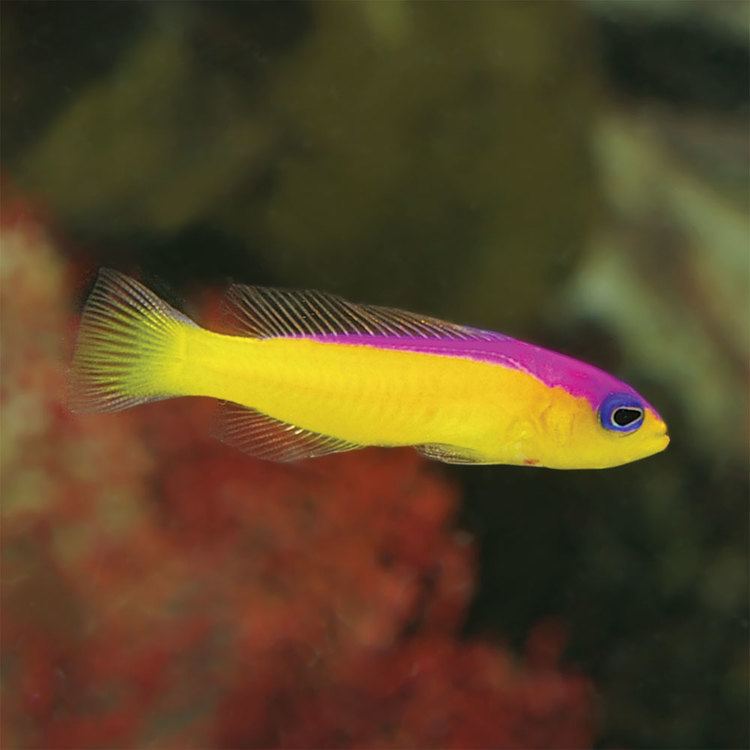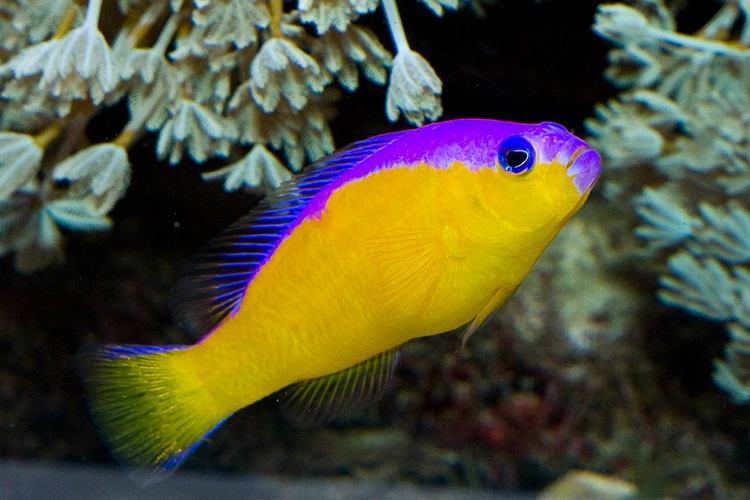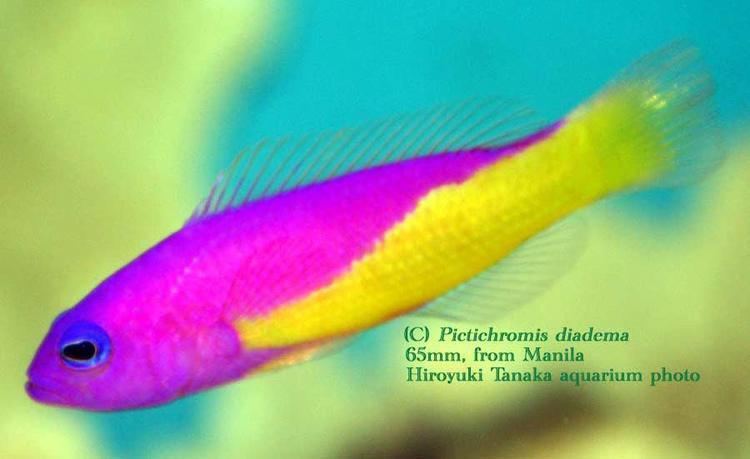Subfamily Pseudochrominae Scientific name Pictichromis diadema Higher classification Pseudochromis Order Perciformes | Family Pseudochromidae Genus Pictichromis Phylum Chordata Rank Species | |
 | ||
Similar Pseudochromis, Dottyback, Pictichromis paccagnellae, Neon dottyback, Pseudochromis porphyreus | ||
Pictichromis diadema
Pictichromis diadema, the bicolor dottyback, diadem dottyback, or purple-top dottyback is a fish species of the dottyback family. It is a popular aquarium fish species.
Contents
- Pictichromis diadema
- Diadem zwergbarsch pictichromis diadema
- Distribution
- Appearance and anatomy
- Ecology
- In the aquarium
- References

Diadem zwergbarsch pictichromis diadema
Distribution

This species is found in rich coral reefs in the western central Pacific Ocean, eastern Malay Peninsula, and western Philippine waters. They are found as close as 5 metres (16 ft) to the surface and as far down as 30 m (98 ft). They are native in 4 countries, including Indonesia, Malaysia, Philippines, and Thailand.
Appearance and anatomy

This species is usually yellow in colour with a magenta stripe running along its back. In the wild, they grow to a reported 6 centimetres (2.4 in).
Ecology
Their diet in the wild is only known to consist of crustaceans.
These fish are capable of changing their sex. After eggs are laid, the male aerates them by picking them up in his mouth. In the wild, they defend a territory several yards in diameter.
In the aquarium
Pictichromis diadema is the first dottyback to be kept in captivity. They are widely sold for the aquarium trade. A very skittish addition to any aquarium, one should be wary to keep this species with other fish of similar sizes; if the Pictichromis diadema is the bigger, he will attack them, whereas if he is the smaller, he will hide most of the time.
